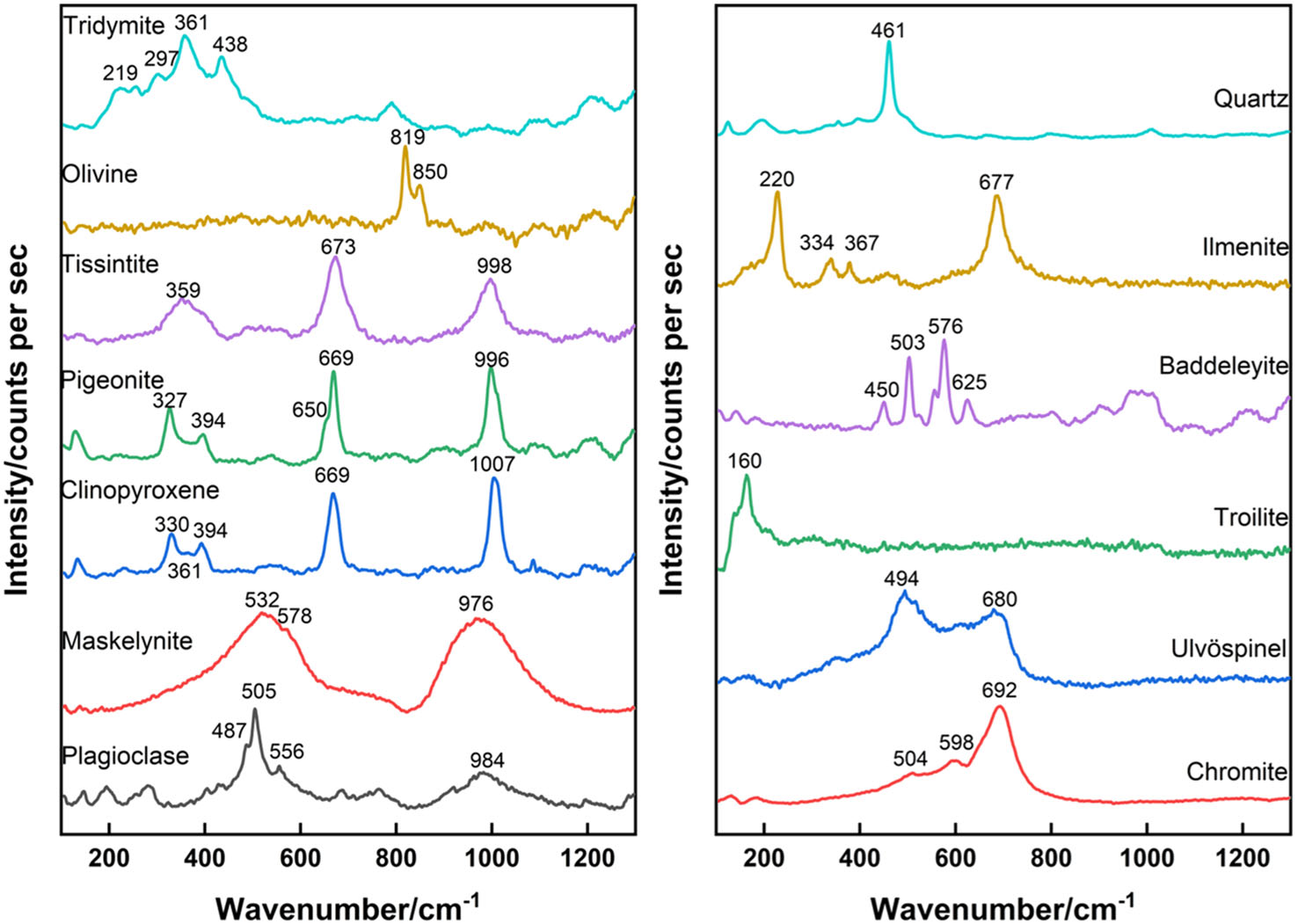We conducted comprehensive Raman and Fourier transform infrared (FTIR) spectroscopic studies on the whole rock and lithic clasts of Northwest Africa (NWA) 4884 to constrain its igneous mineralogy and metamorphic characteristics. NWA 4884 is composed of mostly clinopyroxene (25.8 vol.%), pigeonite (16.6 vol.%), plagioclase (26.6 vol.%), maskelynite (8.1 vol.%), olivine (20.7 vol.%), minor tridymite (1.0 vol.%), quartz (0.2 vol.%), and ilmenite (0.5 vol.%). Lithic clasts contain mafic rocks including plutonic ultramafic cumulate, olivine gabbro, mare basalt, and feldspathic rocks including noritic anorthosite and impact melt breccia. Raman and FTIR spectroscopic analyses are combined to investigate the shock history of this breccia and revealed that NWA 4884 is highly shocked (17.9–48.1 GPa recorded in plagioclase). The combination of bulk composition and remote sensing data provides possible source regions of NWA 4884: the southern Lacus Veris (20.5°S, 84.5°W) within Orientale basin and the western mare unit (45.3°N, 151.3°E) of Campbell Crater. The pairing relationship among NWA 4884, Yamato 793274, Queen Alexandra Range 94281, and NWA 7611 is supported by their petrographic, mineral, and compositional similarities. Our work demonstrates the potential of Raman and FTIR spectroscopies to shed light on igneous petrology and the bombardment history of the Moon.
Link: https://doi.org/10.1002/jrs.5727

